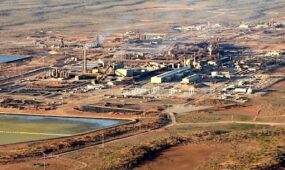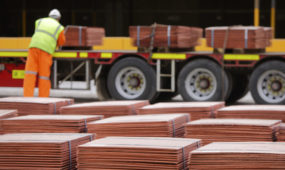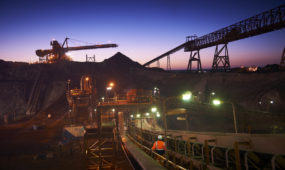Wine industry leads way on solar uptake
Mining & Resources
DOZENS of wineries in Australia’s premier wine state are harnessing the sun’s power for purposes beyond growing grapes.

Sign up to receive notifications about new stories in this category.
Thank you for subscribing to story notifications.
South Australian wineries are embracing solar energy at twice the rate of other business sectors, installers say.
Yalumba Wine Company in the Barossa Valley is just weeks away from completing one of the largest commercial solar system installations in South Australia and the largest to date by any Australian winery.
It will have taken more than three months to put the 5384 individual panels in place at three sites: Yalumba Angaston Winery, Yalumba Nursery, and the separate Oxford Landing Winery.
When fully operational, the 1.4 MW PV system will produce enough renewable energy to reduce Yalumba’s energy costs by about 20 per cent and cut its annual CO2 emissions by more than 1200 tonnes, equivalent to taking 340+ cars off the road.
“It is an exciting project and one that will deliver us significant savings, as well as being consistent with our corporate focus on sustainability,” said Managing Director Nick Waterman.
Yalumba is currently the leader of the pack, but it is an increasingly large pack.
No one keeps a detailed list, but wineries with systems in excess of 100kW include D’Arenberg, Seppeltsfield, Peter Lehmann, Angove, Torbreck, Wirra Wirra, Jim Barry and Gemtree. Many smaller wineries are installing smaller systems.
In the Adelaide Hills, Sidewood has flicked the switch on a 100kW solar system as part of a $3.5m expansion project at its Nairne winery. With the support of an $856,000 grant from the South Australian Government, the system will provide more than 50 per cent of the winery’s annual consumption.
Sidewood has also become the largest sustainable winery in the Adelaide Hills after receiving full Entwine Accreditation for all four of its vineyards in September.
There was a brief lull in solar installations after the current Federal Government scrapped the financial support provided under the previous government’s Clean Technology Investment Program (36 of the 80 projects funded in South Australia in 2012-13 were in wineries) but things are moving again.
David Buetefuer is Director of Sales and Business Development for The Solar Project, which has worked with a number of local wineries including D’Arenberg, suggests four reasons for this: the wine industry is starting to recover from a slow patch; the price of electricity is at an unprecedented high; the cost of solar is coming down; and there are new ways to get started.
Yalumba, for example, has signed a 10-year power purchase agreement with energy supplier AGL, which is installing and maintaining the system and will own the energy produced. This will be sold to Yalumba at a rate comparable or lower than its current per kilowatt hour rate.
Another alternative is a rental model under which, as Buetefuer puts it, the bank owns the system. In both cases, the winery does not have to find the capital up front and the system is off balance sheet.
“It’s an interesting time because all three models now work – power-purchase, rental and straight purchase – whereas not that long ago the only people buying solar were those who had the available capital and could justify payback times of five, six or more years,” Buetefuer said.
“It’s opened up a lot more opportunities.”
Buetefuer said the wine industry recognised the benefit of harnessing solar power at its most productive period of the year, which coincided with the summer to autumn vintage when the demand for electricity was at its peak in wine production.
“One of the defining features of the industry is the long-term planning that goes into establishing vineyards and infrastructure to support wine production well into the future,” he said.
D’Arenberg’s chief winemaker Chester Osborn agrees. He said one of the important things for the winery last year was reducing peak demand from the grid.
“A big portion of our electricity cost comes from our peak requirements which we only need for a couple of months a year, but get charged for every month,” he said.
“We have reduced our power bill by 40 per cent and we are hopeful that the advances in battery technology will lead to further efficiency improvements.”
D’Arenberg’s 200kW system in McLaren Vale was the largest in a winery in South Australia when installed at the end of 2013. The company made the investment so it could generate 20-30 per cent of its power from solar energy and reduce its greenhouse gas emissions by 30 per cent.
Among the most publicly visible solar installations in South Australia are the two arrays that line the road to the Jacob’s Creek Visitor Centre in the Barossa. They not only produce all the energy the winery needs, they feature in quite a few visitor photographs.
South Australia is consistently responsible for about 50 per cent of Australia’s annual wine production, including iconic brands such as Penfolds Grange, Jacob’s Creek, Hardys and Wolf Blass.
There are 18 wine regions in South Australia, including the Barossa Valley, Clare Valley, Coonawarra, Adelaide Hills, Langhorne Creek, McLaren Vale, Limestone Coast and Riverland.
Jump to next article



